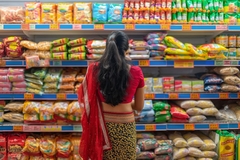
- Industry news
Industry news
- Category news
Category news
- Reports
- Key trends
- Multimedia
- Journal
- Events
- Suppliers
- Home
- Industry news
Industry news
- Category news
Category news
- Reports
- Key trends
- Multimedia
- Events
- Suppliers
EU beef consumption faces sharp decline as demand for poultry rises, reveals report

Poultry consumption and production in the EU is expected to grow annually by 0.5% between now and 2035 due to consumer demand for slow-growing chickens, while beef consumption will fall by 5.9% during the same period, according to European Commission (EC) forecasts.
In its EU Agricultural Outlook 2024-2035 report, the EC says that poultry will continue benefiting from a “healthier image” and relatively lower prices than other meats. Between now and 2035, production will increase by 770,000 metric tons, while consumption is forecasted to jump from 24.2 kg to 25.8 kg.
“Together with further export opportunities, this would push poultry production upward between now and 2035, albeit at a lower yearly growth rate than seen in the past decade. Due to environmental legislation, expansion may only be possible in certain EU regions,” outlines the report.

Poultry exports are also expected to grow slowly by 0.8% annually until 2035, reaching more than 2 million metric tons. This is due to trade with the UK and increasing demand from Sub-Saharan Africa and some Asian countries. According to the EC, the duty-free quota-free agreement with Ukraine, which is valid until June 2025, has also led to a significant increase in imports.
Poultry sector will still face challenges
However, despite the positive trajectory for poultry, the sector will face threats like avian influenza, which is expected to extend over the whole year instead of being a seasonal event, reveals the report.
The EC adds: “It will challenge the sector, especially free-range production systems. EU poultry exports are due to regain momentum, despite the continuing price gap with world prices.”
Meanwhile, beef will continue to face challenges such as “tight supply and high prices” and sustainability concerns, with negative perceptions of the meat heavily impacting its performance.
In addition to a consumption decline, beef production is expected to drop by 6.7% compared to the 2022-2024 average, falling by 450,000 tons to 6.3 million by 2035. The EU cow herd is set to decrease by 2.9 million heads over the same period (9.6%).
Young people’s go-to meat option
Industry bodies say they are not surprised by the EU’s forecasts. The Association of Poultry Processors and Poultry Trade in EU Countries (AVEC) says poultry is the most sustainable in CO2 emissions, and many young people see it as their go-to choice of meat as it’s lean and easy to cook.
 The beef sector is struggling with a negative perception due to sustainability concerns and high prices.
The beef sector is struggling with a negative perception due to sustainability concerns and high prices.
Birthe Steenberg, secretary general at the organization, tells Food Ingredients First that in addition to consumption pattern changes, there is a misconception among the general public about the level of decline in meat.
“If you go out and ask the person in the street, I think that they would say meat consumption is going much further down than it is, and that’s one of the things we find could be elaborated a bit more on by authorities in many countries because many people just hear the message we should eat less meat,” she says.
“But as far as we see, consumers are not prepared to do that. Some nutritionists have now started to say, ‘Well, take it easy, meat is an important part of a balanced diet.’”
Nutritional values dialogue
AVEC would like EU governments and the EC to involve producers and the wider industry in a more “honest and open” dialogue about meat and its nutritional values so consumers get all the facts to make more informed choices.
Farmers and industry have heavily criticized the Commission in the past for not considering their views on critical matters, most notably the EU’s much-maligned Green Deal.
Other notable trends in the outlook report include EU sugar production, which is projected to remain relatively stable, declining from an average of 15.4 million metric tons to 15.3 million metric tons in 2035 due to changes in area and yields.
Elsewhere, the EU highlights milk production as reaching “a turning point” in the medium term, where the continuous decline in the dairy cow herd is not counterbalanced anymore by a growth in milk yields.
“Milk production will continue to be driven by increasing contributions from the sector to more sustainable agricultural and food systems, generating more value added in the sector,” the report explains.










